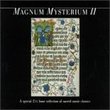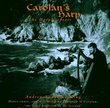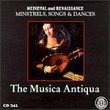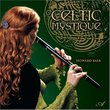| All Artists: Richard Campbell, Julia Hodgson, William Hunt, Elizabeth Liddle, Christopher Wilson Title: In Nomine: 16th Century English Music for Viols Including the Complete Consort Music of Thomas Tallis - Fretwork Members Wishing: 0 Total Copies: 0 Label: Amon Ra Release Date: 3/6/1995 Genres: Special Interest, Classical Styles: Chamber Music, Historical Periods, Baroque (c.1600-1750), Classical (c.1770-1830) Number of Discs: 1 SwapaCD Credits: 1 UPCs: 750582236426, 5013133302922 |
Search - Richard Campbell, Julia Hodgson, William Hunt :: In Nomine: 16th Century English Music for Viols Including the Complete Consort Music of Thomas Tallis - Fretwork
CD DetailsSimilarly Requested CDs
|
CD ReviewsBefore Haydn and Mozart Giordano Bruno | Wherever I am, I am. | 11/28/2007 (5 out of 5 stars) "In our era of elite musical professionalism and expiring musical skills in the general population, the "string quartet" has become the most equisite esoteric ensemble of all. Such was not the case in the past, when quartets were often commissioned by dilettantes and performed by very capable amateurs. Quartets were the pinnacle of "recreational" music long before they became items on university concert series. But even before the popularity of the quartet, there was a very sophisticated and challenging repertory of domestic music for a "closed consort" of strings, specifically for consorts of violas da gamba, which were the amateur's instrument par excellance. Violins remained largely the tools of professional players, for public music, until the gambas faded from popularity. In England, yeoman farmers and royal favorites all shared the passion for gamba consorts; often a chest of gambas was the most valuable item mentioned in the wills of people of modest means.
FRETWORK is unquestionably the finest gamba ensemble since the rebirth of "early music". Appropriately British to the soles of their feet, FRETWORK has quietly recorded masterwork after masterwork of English renaissance polyphony for almost thirty years now. Their performances include collaborations with vocal ensembles as well as disks dedicated to such great but forgotten composers as William Lawes and Christopher Tye. They've also inspired (and commissioned) modern compositions for their instruments. The name FRETWORK on the cover of any CD is almost a guarantee of excellence. The disk "In Nomine" features 16th C consort music of great delicacy and whimsy. Some pieces, especially those by Tye and Baldwin, are also of fiendish rhythmic complexity, suggesting that the 'gentlemen' who performed them were no slouches on their fretted strings. The gamba doesn't have the huge range of dynamics of the violin or cello, but it does have the capability of 'tablature' playing, using multiple stops. The virtues of the consort are very rich harmonies and luscious tonalities. This music is gently intellectual, sensuously meditative. Nothing quite like it was written again until the later quartets of Haydn and Mozart 150 years after." |

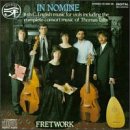
 Track Listings (21) - Disc #1
Track Listings (21) - Disc #1

